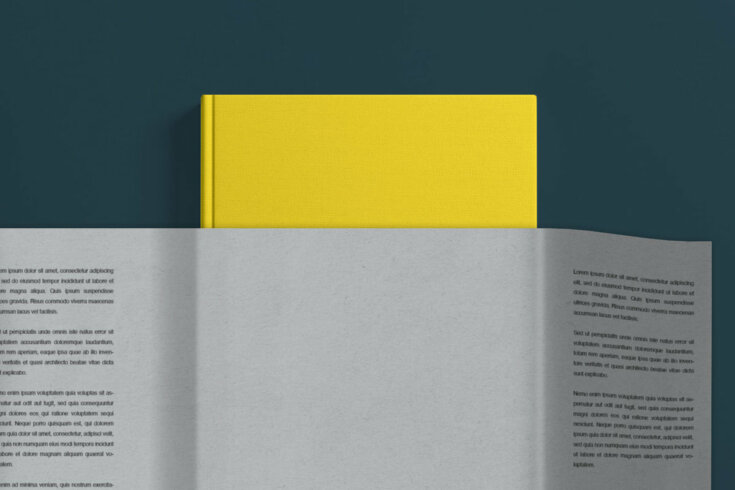Point to any book on my shelves and I’ll tell you exactly why I bought it: because I heard about it from an essay or a list or a trusted friend or bookseller. Maybe I’m obsessed with reading everything available on the subject. Often, I loved something else the author wrote. I like the cover. I like the publisher. I like—controversially—the constellation of blurbs that tells me who the writer’s in community with. Perhaps the writer’s in community with me. They’re my buddy. My hero. My crush. My nemesis.
Rarely do I buy a book because I was seduced by the summary on the back or inside flap. As a reader, I don’t find such text all that relevant. I’ll skim it if I’m browsing in a bookstore or on a retail page—just enough to get the general contours. But lately, what used to be passive avoidance has evolved into a deliberate stance: these days, I refuse to read the jacket copy in full unless I absolutely have to. Jacket copy offers neither an effective barometer for predicting what I love nor reliable protection from buying things I regret. It is reductive, misleading, and—I have decided—none of my business.
Jacket copy is, as the name suggests, the text that appears somewhere on a book’s cover or “dust jacket.” It usually consists of a bold, punchy tagline followed by two or three short paragraphs—written by the publisher, sometimes with the writer’s input—that describe the plot or themes and make a pitch for why you should read the book. For a little sliver of prose, it has a big job: to flaunt a book’s authenticity and specialness while simultaneously peddling the inauthentic, ordinary tropes that make people buy stuff. In a blog post for Kirkus Reviews, a trade outlet that reviews titles before their publication, Hannah Guy calls sales copy “one of the most important tools for selling books.”
Critics have called into question how well jacket copy fulfills these objectives. Writing for the New York Times back in 1996, Pico Iyer railed against the inflated jacket and blurb economies, lamenting the unhelpful trend of hawking a book by chucking author names into a blender—for one book, the copy he quotes opens like a joke about two guys walking into a bar: “If a manic J. G. Ballard and a depressed David Lodge got together . . .” Twenty-five years later, Eric Farwell argued in Slate that book descriptions have become so bland and tropey that they tell us nothing about a title’s style or contents. Words like “dazzling,” “brilliant,” and “amazing” have become so ubiquitous as to lose all meaning. Zoom out far enough on any plot and they all start to sound like versions of the same boilerplate, with arcs about a protagonist journeying to find themself or having to save their marriage. “How did we get to a place,” Farwell asks, “where we can’t rely on book descriptions to tell us what the book is actually about or what the writing is really like?”
While I agree with Iyer and Farwell about jacket copy’s general unhelpfulness, I’ve also drawn the opposite conclusion: not that it tells us too little but rather that it tells us too much—moreover, too much of the wrong thing. Being spoon-fed a crude distillation of plot and theme dictates, and therefore circumscribes, the terms of my reading. It tells me what to expect and how to feel in a way that strikes me as controlling, even demeaning. Somebody is trying to sell me something, which prompts me into a defensive pose—skeptical, closed off, incurious—that I don’t want anywhere near my experience of art. I just want to get a premise and some vibes, a taste of tone, a flicker of the voice the book contains. I don’t want to be told what’s about to happen, even in the vaguest sense. And I definitely don’t want to be told what it’s “about.”
There’s a difference between knowing a story’s contours and having its pithiest sound bites pressed into your hand like a coupon flyer. The former is helpful; the latter risks offence. In 2021, British writer Jeanette Winterson, whose bibliography includes the classics Oranges Are Not the Only Fruit and Written on the Body, was so revulsed by the “cosy little domestic” copy added to the reissued versions of her books that she decided to burn them and post a photo of the conflagration online. (In a subsequent statement to the Guardian, she noted that her publishers were “fixing the problem.”) Or consider the analogous diminishment performed by buzzwords like “urgent” or “necessary,” examples of the kind of insistent language that frequently crops up in jacket copy. In 2018, critic Lauren Oyler wrote that “necessary” was being appended to more and more works of art—often by artists from underrepresented backgrounds—as a kind of diffuse moral corrective, “a discursive crutch for describing a work’s right-minded views . . . that is so distinct from aesthetics it can be affixed to just about anything.” The work, in other words, doesn’t have to be good. It just has to make the audience feel like they are for buying it.
This is a reason for purchasing a book that’s totally divorced from the point of the form. In recent years, we’ve only seen this kind of acquisitive reading escalate. Books are marketed for being “about race”—a phrase I agonized about including in my own jacket copy before deciding it was useful shorthand—or even “anti-racist,” shrinking the entire aesthetic spectrum to the pinprick of self-improvement. Such terms risk implying that that sole selling point forms the extent of the writer’s project, ambitions, or creative ability and, what’s more, that it’s all the reader can expect to take away from the text. This is what happened in the summer of 2020, with the explosion of so-called anti-racist titles. Writing about this surge of interest for Vulture, Lauren Michele Jackson observed that it was unfair to the work to corral it all into a one-note micro canon: “If you want to read a novel, read a damn novel, like it’s a novel.”
But here’s the rub: a pithy little sales pitch can work. Even though it’s aesthetically and politically lazy to reduce a work to its lowest common denominator, doing so can also sell books—in June 2020, the New York Times bestseller list was full of titles “about race.”
The role jacket copy can play in a book’s success is what makes me stop short of calling to abolish it entirely. After all, publishing is—I lament daily—a business. As a reader, I’d love to live in a world of blank back covers that preserve a text’s essential mystery. As a writer, the idea of my book bobbing around out there unadorned, stripped of any wiles to woo a reader, absolutely terrifies me. Who would pick it up? To do away with jacket copy would be to exclude the segment of the reading population that encounters books that way, readers for whom knowing what a book is about helps them decide whether to give or withhold their attention. And in the end, it’s readers that jacket copy—and the books it adorns—is truly for.
But I still believe there’s value in separating our encounter with the text from the commercial aims that copy embodies. Because how much do you need to know going in, really? How much more would you get out of a book if you submitted to the pleasure of figuring out its internal logic as you went along rather than memorizing the map before you even set out?
Widen the channels by which you let titles into your life. Pick up a book because you like the cover or you trust the publisher or you think the author’s hot. Pick it up for the city where it’s set or the literary trend it’s supposedly part of or the language it was translated from. There are so many more rewarding, representative ways to choose a book than the stew of adjectives on the back.





